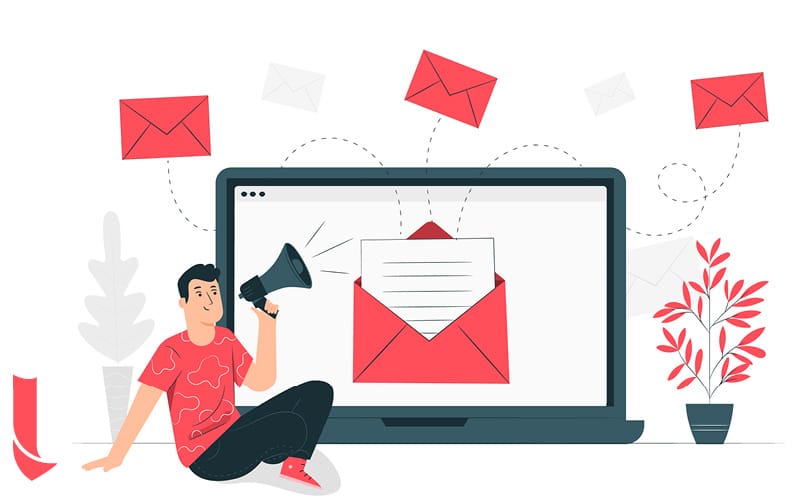E-MAIL: A THREAT TO PRODUCTIVITY AND A REVEALER OF INEFFICIENCY

Email has become a central tool in professional communication, just like meetings. However, just like these meetings, it has become a major factor of inefficiency, slowing down employee productivity and revealing organizational dysfunctions. Too often used by reflex rather than necessity, email has become a source of cognitive overload, misunderstandings, and work fragmentation. How did we get here? And more importantly, how can we regain a rational and effective use of this tool?
Email: An Unnecessary Overload and an Obstacle to Effectiveness
- Excessive Multiplication of Emails The ease of sending emails and the lack of immediate constraints have made email a tool massively used. As a result:
- Too many messages: A manager receives on average more than 120 emails per day, a significant portion of which is either unnecessary or non-prioritized.
- Inefficient exchanges: Long email chains, "reply-all" discussions, and unnecessary follow-ups increase the cognitive load.
- Constant interruptions: Every email received generates a notification that prompts you to interrupt your current task, reducing focus and increasing the time it takes to recover from each distraction.
- Asynchronous Communication That Slows Down Processes Email relies on asynchronous communication, meaning the sender and the recipient do not have to be online at the same time to exchange messages. While this can be advantageous for managing delayed exchanges, it also poses several issues:
- Long response times that delay decision-making.
- Multiple exchanges to clarify points that could have been resolved instantly in a direct conversation.
- The "ping-pong" effect: Every email often leads to responses and counter-responses, instead of a structured and direct exchange.
- A Source of Misunderstandings and Misinterpretations Unlike oral communication, email lacks non-verbal language. This absence of contextual clues fosters:
- Erroneous interpretations: A neutral tone may be perceived as harsh or aggressive, creating unnecessary tensions.
- Poorly worded messages that lead to misunderstandings and require clarifications.
- Dilution of responsibilities: Vague emails or emails addressed to multiple recipients can result in the "someone else should respond" effect.
- A Revealer of Organizational Dysfunctions Excessive email use is often a symptom of an inefficient organization:
- Lack of clarity in roles and responsibilities, forcing employees to cover themselves with confirmation or validation emails.
- Lack of decision structuring, requiring follow-up emails to make up for ineffective meetings.
- A culture of control and traceability, where every exchange needs to be written to avoid future ambiguity.
How to Rationalize Email Use in the Workplace?
In response to these issues, it’s essential to adopt a more strategic approach to using email. Here’s a three-step methodology:
- Identify Situations Where Email is Useful Email remains a relevant tool in certain situations:
- For formal communications: Sending documents, written confirmations*, official communications.
- For exchanges that do not require an immediate response.
- For exchanges with external contacts (clients, partners, suppliers).
*Note: Be cautious that "written confirmations" do not become political protection tools, excuse mechanisms, or justifications... in other words, anything but Agile and Transparent. Email should never replace oral exchanges, which are often more effective. Similarly, instead of sending a meeting recap by email, prefer a meeting minute note on Confluence.
However, it should not be used for:
- Quick discussions → Prefer instant messaging (Slack, Teams).
- Important decisions → Arrange a meeting or a call.
- Collaborative tasks → Use project management tools (Trello, Asana, Notion).
- Adopt Best Practices for Sending and Reading Emails
- Limit recipients: Only copy people who are truly involved.
- Write clear and concise emails: Use a precise subject line, structured message, and clearly identified action.
- Use email templates to avoid rewriting the same messages repeatedly.
- Avoid unnecessary emails: Before sending an email, ask yourself if another communication method would be more appropriate.
- Reduce Email Dependence by Using More Effective Alternatives
- Encourage direct exchanges: Prefer face-to-face or phone conversations for clarity and speed.
- Use collaborative platforms for project tracking and internal communication.
- Set email management rules:
- Turn off notifications to avoid constant distractions.
- Set specific times to handle emails (e.g., 2-3 times a day).
- Implement an "email-free day" to encourage other communication methods.
Conclusion
Email, originally designed to improve communication in the workplace, has turned into a productivity curse when misused. Like ineffective meetings, it reveals organizational problems and counterproductive work habits. By adopting a more rational approach, limiting its use to situations where it is truly useful, and favoring other more suitable tools, companies can reduce information overload and regain better collective efficiency.
